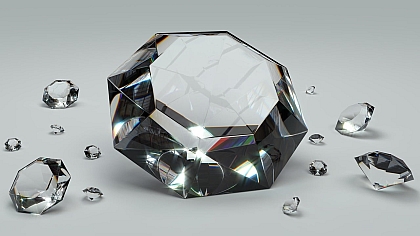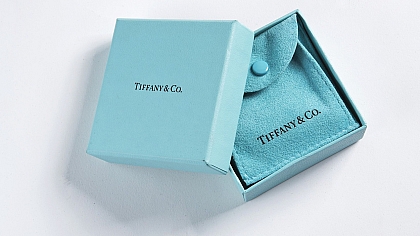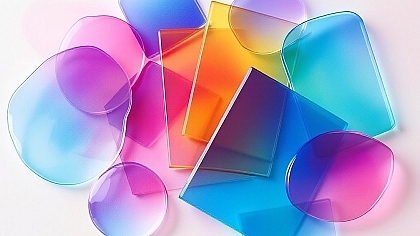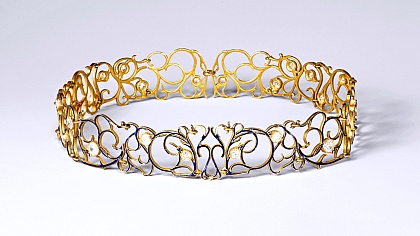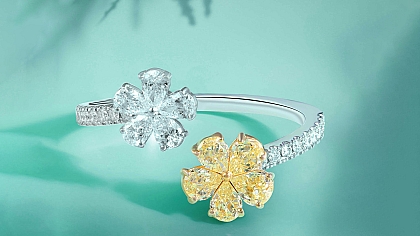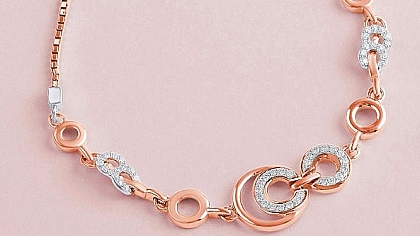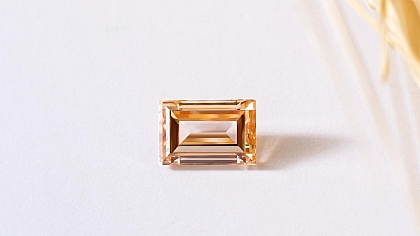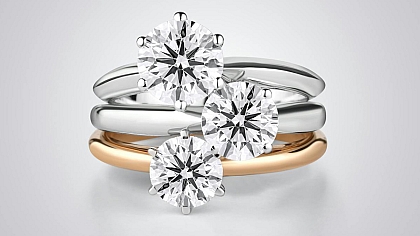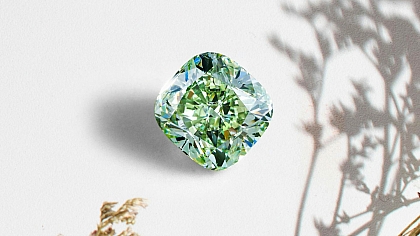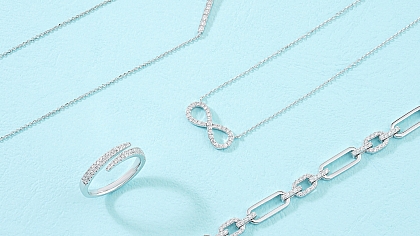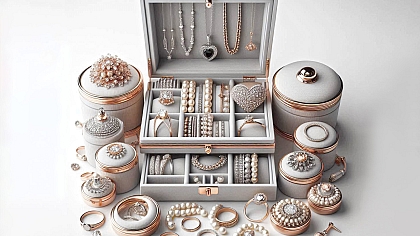
Custom Jewellery Part 1: Designing Your Dream Piece from Scratch
Definition and Significance of Custom Jewellery
Custom jewellery represents a unique and deeply personal way to create pieces that are not just accessories but extensions of your personality and story. Unlike mass-produced items, custom jewellery is crafted specifically to your desires, reflecting your individual tastes, milestones, and memories. This bespoke process allows you to have complete control over every aspect of the piece, from the design and materials to the final finishing touches.
Custom jewellery holds significant sentimental value. Whether it's an engagement ring designed to symbolize your unique love story, a pendant crafted to commemorate a special occasion or a bracelet that incorporates elements of a family heirloom, these pieces become cherished artefacts that can be passed down through generations.
The emotional connection to custom jewellery makes it more than just an adornment; it becomes a tangible representation of meaningful moments and personal achievements.
Why Opt for Custom Jewellery?
Opting for custom jewellery provides several distinct advantages. First and foremost is exclusivity. When you create a custom piece, you are guaranteed that no one else in the world will have an identical item. This uniqueness can be particularly appealing for significant life events such as engagements, weddings, anniversaries, and milestone birthdays.
Furthermore, custom jewellery allows for unparalleled personalization. You can infuse your personality, preferences, and style into every detail, ensuring the final piece aligns perfectly with your vision. This level of personalization is rarely achievable with off-the-shelf items.
Another key benefit is the quality and craftsmanship that goes into creating custom jewellery. Reputable jewellers take pride in their work, often using superior materials and techniques to bring your vision to life. This dedication to quality results in a piece that is not only beautiful but also durable and lasting.
Lastly, custom jewellery can be a sustainable choice. By choosing ethically sourced materials and working with jewellers who prioritize responsible practices, you can ensure that your piece is crafted in a way that aligns with your values.
Initial Considerations
Budgeting for Your Custom Piece
Before embarking on the journey of designing custom jewellery, it's essential to establish a budget. Custom pieces can vary widely in cost depending on the complexity of the design, the materials chosen, and the jeweller’s expertise. Setting a clear budget upfront helps guide your decisions throughout the process and ensures you create a piece that meets your expectations without financial strain.
Consider the following factors when budgeting:
- Design Complexity: Intricate designs with detailed craftsmanship will generally cost more due to the additional time and skill required.
- Materials: The choice of metals (such as gold, platinum, or silver) and gemstones (such as diamonds, sapphires, or emeralds) significantly impacts the price. Additionally, the quality and rarity of these materials will affect the overall cost.
- Labour and Expertise: The jeweller's skill level and reputation can influence pricing. Highly skilled artisans with a strong portfolio may charge a premium for their services.
Understanding the Timeline
Creating a custom piece of jewellery is a detailed process that can take several weeks to months, depending on the complexity and the jeweller’s workload. Understanding the timeline is crucial, especially if the piece is intended for a specific event, such as a wedding or anniversary.
The typical timeline includes:
- Initial Consultation and Design Phase: This stage involves discussing your ideas with the jeweller, creating sketches or CAD models, and finalizing the design. This process can take a few weeks to ensure all details are perfect.
- Material Sourcing: Once the design is finalized, sourcing the right materials can take additional time, especially if specific or rare gemstones are required.
- Production: The actual crafting of the piece involves multiple steps, including casting, setting stones, and finishing. Depending on the complexity, this phase can take several weeks.
- Quality Assurance: After crafting, the piece undergoes thorough quality checks to ensure it meets the highest standards. This step is crucial for ensuring durability and aesthetic appeal.
Planning for Adjustments and Revisions
It's important to build in time for potential adjustments and revisions. Even with a clear vision, minor tweaks might be needed as the piece takes shape. Having open communication with your jeweller throughout the process will ensure any changes are promptly addressed without causing significant delays.
Inspiration and Ideas
Finding Your Inspiration
Creating a custom jewellery piece begins with gathering inspiration. This can come from a variety of sources, each offering unique ideas to help shape your vision. Consider the following avenues to spark your creativity:
- Personal Experiences and Memories: Reflect on significant moments in your life, such as a memorable trip, a cherished family tradition, or an important milestone. These can provide meaningful themes and elements for your design.
- Nature and Surroundings: The natural world is a rich source of inspiration, offering diverse colours, shapes, and textures. Flowers, leaves, landscapes, and celestial elements can be beautifully incorporated into jewellery designs.
- Art and Culture: Look to art movements, cultural motifs, and historical periods that resonate with you. Whether it's the intricate patterns of Art Deco, the elegance of Victorian jewellery, or the vibrant colours of Indian motifs, art and culture can guide your design choices.
- Fashion and Trends: Keep an eye on current jewellery trends and fashion styles. While custom pieces are timeless, incorporating contemporary elements can give your design a modern twist.
Exploring Design Styles and Trends
Understanding different design styles and trends can help you refine your ideas and communicate them effectively to your jeweller. Here are some popular design styles to consider:
- Classic and Timeless: These designs often feature clean lines, simple shapes, and traditional settings. They emphasize elegance and sophistication, making them suitable for everyday wear and special occasions alike.
- Vintage and Retro: Vintage designs draw inspiration from past eras, such as the Roaring Twenties, the Victorian era, or the glamorous 1950s. They often include intricate details, filigree work, and antique settings.
- Modern and Minimalist: Modern designs focus on simplicity and sleekness, often using geometric shapes and clean lines. Minimalist jewellery tends to be understated yet stylish, perfect for those who prefer a contemporary look.
- Bohemian and Eclectic: Bohemian styles are characterized by their free-spirited and artistic vibe. These pieces often feature mixed materials, vibrant colours, and unconventional shapes, creating a unique and personal aesthetic.
- Nature-Inspired: Designs inspired by nature incorporate elements like leaves, flowers, animals, and celestial bodies. These pieces can be whimsical and delicate, celebrating the beauty of the natural world.
Creating a Mood Board
A mood board is a visual tool that helps you compile and organize your ideas. By collecting images, colours, textures, and sketches that resonate with your vision, you can create a cohesive representation of your desired piece. A mood board can be digital or physical, and it serves as a valuable reference point during consultations with your jeweller.
- Collect Images: Gather photos of jewellery pieces, nature elements, artworks, and fashion that inspire you. Look for patterns, colour schemes, and design elements that you love.
- Identify Key Themes: From your collection, identify recurring themes and elements. This might include specific gemstones, metal finishes, shapes, or design motifs.
- Organize and Present: Arrange your images and notes in a visually appealing way. Group similar items together and create sections that highlight different aspects of your design. This organized presentation will help your jeweller understand your vision more clearly.
Choosing the Right Jeweller
Researching Reputable Jewellers
Selecting the right jeweller is crucial to the success of your custom jewellery project. A skilled and trustworthy jeweller will not only bring your vision to life but also provide valuable insights and suggestions. Here are steps to help you find the right jeweller:
- Seek Recommendations: Start by asking friends, family, or colleagues for recommendations. Personal referrals can provide firsthand insights into a jeweller's reliability and quality of work.
- Online Research: Look for jewellers with a strong online presence. Review their websites, social media profiles, and customer reviews. Reputable jewellers often showcase their portfolios online, giving you an idea of their style and expertise.
- Professional Associations: Consider jewellers who are members of professional associations, such as the Jewelers of America or the Gemological Institute of America (GIA). Membership in such organizations often indicates a commitment to ethical practices and high standards.
Evaluating Portfolios and Reviews
Once you have a list of potential jewellers, evaluate their portfolios and customer reviews to narrow down your options.
- Portfolio Review: Examine the jeweller's previous work to assess their design style and craftsmanship. Look for diversity in their designs and attention to detail. A good portfolio should demonstrate their ability to create a variety of pieces, from simple and elegant to complex and intricate.
- Customer Reviews: Read customer reviews and testimonials on the jeweller's website and third-party review sites. Pay attention to comments about the quality of the finished pieces, the customer service experience, and any issues encountered during the process. Consistently positive reviews are a good indicator of reliability and satisfaction.
- Case Studies: Some jewellers provide detailed case studies of custom projects, outlining the process from concept to completion. These can offer valuable insights into how the jeweller approaches custom work and handles challenges.
Initial Consultations
After narrowing down your choices, schedule initial consultations with a few jewellers to discuss your project. This is an opportunity to assess their expertise, communication style, and whether they understand your vision.
- Prepare Questions: Come prepared with a list of questions about their experience, process, and pricing. Ask about their approach to custom designs, how they source materials, and the expected timeline for your piece.
- Discuss Your Vision: Share your inspiration, mood board, and any specific ideas you have. A good jeweller will listen carefully, ask clarifying questions, and offer suggestions to enhance your design.
- Evaluate Communication: Pay attention to how the jeweller communicates. Are they responsive, attentive, and willing to address your concerns? Good communication is essential for a successful collaboration.
- Review the Contract: Before committing, review the contract or agreement thoroughly. Ensure it outlines the project scope, timeline, costs, payment schedule, and any guarantees or warranties.
Making the Final Decision
Choose a jeweller who not only meets your technical and artistic requirements but also makes you feel comfortable and confident in your abilities. Trust your instincts select someone who you believe will respect your vision and work diligently to create your dream piece.
The Design Process
Conceptualizing Your Design
The design process begins with conceptualizing your piece and transforming your ideas and inspirations into a concrete vision. This phase is collaborative, involving close communication between you and your jeweller.
- Initial Consultation: During your initial consultation, you will discuss your ideas, preferences, and any inspirations you have gathered. This is where your mood board becomes especially useful. Your jeweller will listen to your thoughts and provide feedback, helping to refine your vision.
- Clarifying Details: Identify the key elements of your design, such as the type of jewellery (ring, necklace, bracelet, etc.), the overall style (classic, modern, vintage, etc.), and any specific features you want to include (particular gemstones, engravings, motifs).
- Setting Priorities: Determine the most important aspects of your design. This could be the type of gemstone, the style of setting, or a particular design motif. Setting priorities helps ensure that the final piece aligns with your most cherished ideas, even if some adjustments are needed along the way.
Working with Sketches and CAD Models
Once you have a clear vision, the jeweller will begin creating initial sketches and computer-aided design (CAD) models. These visual representations help bring your concept to life and allow you to see different angles and details.
- Hand Sketches: Many jewellers start with hand-drawn sketches to capture the basic design and layout. These sketches provide a rough idea of the piece and serve as a foundation for more detailed renderings.
- CAD Models: Using CAD software, jewellers create detailed 3D models of your design. These models offer a precise and realistic view of the piece, allowing you to see how different elements come together. CAD models can be rotated and viewed from various angles, providing a comprehensive understanding of the design.
- Iterative Feedback: Review the sketches and CAD models carefully. Provide feedback on any changes or adjustments you want to make. This iterative process may involve several rounds of revisions to ensure every detail meets your expectations.
Iterative Design and Feedback
The design process is iterative, requiring close collaboration and frequent feedback to perfect your piece. Here’s how to navigate this phase effectively:
- Open Communication: Maintain open and honest communication with your jeweller. Clearly express what you like and dislike about each iteration, and don’t hesitate to ask questions or request changes.
- Detailed Review: Examine each iteration carefully, considering both aesthetics and functionality. Pay attention to proportions, symmetry, and how the piece aligns with your vision.
- Mock-Ups and Prototypes: In some cases, jewellers may create physical mock-ups or prototypes, especially for complex designs. These can help you visualize the piece more accurately and provide a better sense of its scale and feel.
- Final Approval: Once you are satisfied with the design, give your final approval. This marks the transition from the design phase to the actual crafting of your custom piece.
Selecting Materials
Choosing the Right Metals
The choice of metal is a fundamental aspect of custom jewellery design, affecting both the aesthetic and durability of your piece. Here are some popular options and their characteristics:
- Gold: Gold is a timeless and versatile choice, available in various colours and purity levels:
- Yellow Gold: The classic choice, appreciated for its warm and rich hue. It’s available in different karats, with 18K and 14K being the most common for jewellery.
- White Gold: Alloyed with metals like palladium or nickel, white gold has a silvery appearance and is often plated with rhodium for enhanced shine and durability.
- Rose Gold: Created by adding copper to gold, rose gold has a distinctive pinkish tint that adds a romantic touch to any piece.
- Platinum: Known for its strength and natural white lustre, platinum is a premium choice for fine jewellery. It’s hypoallergenic and highly resistant to tarnish, making it ideal for engagement rings and wedding bands.
- Silver: Sterling silver is a more affordable option that offers a bright and shiny finish. However, it’s softer than gold and platinum and may require more maintenance to prevent tarnishing.
- Alternative Metals: Metals like titanium, tungsten, and palladium are gaining popularity for their unique properties and modern look. They are typically more durable and scratch-resistant than traditional metals.
Understanding Gemstones and Their Qualities
Selecting the right gemstones is another critical decision in custom jewellery design. Consider the following factors:
- Diamonds: The most popular gemstone for engagement rings and other fine jewellery. Diamonds are graded based on the 4Cs: Cut, Colour, Clarity, and Carat weight.
- Cut: The quality of a diamond’s cut affects its brilliance and sparkle. Popular cuts include round, princess, emerald, and oval.
- Colour: Diamonds range from colourless to shades of yellow and brown. Colourless diamonds (graded D-F) are the most valuable.
- Clarity: Clarity refers to the presence of internal or external imperfections. The fewer the inclusions and blemishes, the higher the clarity grade.
- Carat: Carat weight measures the size of the diamond. Larger diamonds are rarer and more expensive.
- Coloured Gemstones: Sapphires, rubies, emeralds, and other coloured gemstones offer vibrant alternatives to diamonds. Each gemstone has its unique properties and grading standards.
- Sapphires: Available in various colours, with blue being the most prized. Sapphires are known for their durability and brilliance.
- Rubies: Valued for their deep red colour and rarity. High-quality rubies are often more expensive than diamonds.
- Emeralds: Known for their rich green colour and inclusions, which are sometimes referred to as the stone’s “jardin.” Emeralds require careful handling due to their relative softness.
- Birthstones and Semi-Precious Stones: Personalize your jewellery with birthstones or semi-precious stones like amethyst, garnet, topaz, or opal. These stones can add a unique and personal touch to your design.
Ethical Considerations in Material Sourcing
Ethical sourcing of materials is increasingly important to many jewellery buyers. Ensure your jeweller follows responsible practices:
- Conflict-Free Diamonds: Opt for diamonds that adhere to the Kimberley Process, ensuring they are conflict-free and ethically sourced.
- Fair Trade and Recycled Metals: Choose jewellers who use fair trade gold or recycled metals. This reduces the environmental impact and supports ethical labour practices.
- Certified Gemstones: Look for certifications from reputable organizations like the Gemological Institute of America (GIA) or the American Gem Society (AGS), which verify the authenticity and quality of gemstones.
Customization Options
Engravings and Personal Touches
One of the most meaningful ways to personalize your custom jewellery is through engravings. These can range from simple initials or dates to more elaborate designs. Here are some popular engraving ideas:
- Initials and Monograms: Adding your initials, your partner’s initials, or a combination of both in a monogram can make the piece uniquely yours.
- Special Dates: Commemorate significant dates such as anniversaries, birthdays, or the day you met with an engraving inside a ring band or on the back of a pendant.
- Short Messages: Include a meaningful phrase, quote, or a few words that hold special significance to you.
- Symbols and Icons: Small symbols like hearts, infinity signs, or religious icons can add a deeper layer of personal meaning to your jewellery.
- Handwriting and Signatures: Some jewellers offer the option to engrave a loved one’s actual handwriting or signature, adding a truly personal touch.
Incorporating Heirloom Pieces
Integrating heirloom pieces into your custom jewellery can infuse your design with sentimental value and family history. Here’s how to do it effectively:
- Reusing Gemstones: Repurpose gemstones from an existing piece of jewellery. This not only preserves the sentimental value but also can reduce costs if the stones are of high quality.
- Metal Melting: Some jewellers can melt down gold from heirloom jewellery to create a new piece. This is a beautiful way to carry forward family heritage.
- Design Integration: Incorporate design elements from the heirloom piece into the new design. This could be a specific pattern, setting style, or motif that holds special meaning.
- Combination Pieces: Combine elements from multiple heirloom items into one cohesive piece. For instance, you could use a gemstone from a grandmother’s ring and gold from a grandfather’s watch to create a new ring.
Unique Design Elements
Custom jewellery allows you to explore a wide range of design elements to create a piece that stands out. Consider these unique options:
- Mixed Metals: Combining different metals such as white gold, yellow gold, and rose gold can create a striking and modern look.
- Asymmetrical Designs: Embrace asymmetry for a contemporary and artistic feel. This can be applied to settings, stone arrangements, or overall shapes.
- Nature-Inspired Elements: Incorporate organic shapes and textures that mimic elements of nature, such as leaves, vines, or floral motifs.
- Hidden Details: Add hidden gems, engravings, or design elements that only you or the wearer will know about. These can be inside a ring band, under a gemstone, or on the back of a pendant.
- Interchangeable Components: Design pieces with interchangeable parts, such as pendants that can be swapped or rings with removable stones. This adds versatility and allows the wearer to change the look as desired.
Colour Customization
Playing with colour can significantly impact the look and feel of your custom jewellery. Here are some ideas:
- Coloured Gemstones: Use coloured gemstones to add vibrancy and uniqueness to your design. Consider birthstones or stones with personal significance.
- Enamel: Incorporate enamel work to add pops of colour and intricate patterns. Enamel can be used to create detailed designs that stand out.
- Two-Tone Metals: Combine different metal colours in one piece. This can create a visually interesting contrast and highlight specific design elements.
Modular and Transformative Designs
For a truly innovative approach, consider designs that can transform or be worn in multiple ways:
- Convertible Jewellery: Pieces that can be worn in different styles, such as a necklace that converts into a bracelet, or earrings that can be worn as studs or drops.
- Stackable Rings and Bracelets: Create sets of stackable rings or bracelets that can be worn individually or together for different looks.
- Interchangeable Pendants and Charms: Design a base piece that allows for different pendants or charms to be attached, offering versatility and customization.
- Read Custom Jewellery Part 2 to find out more about the production process, caring for your custom jewellery piece, and common myths about custom jewellery.
